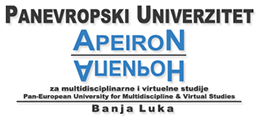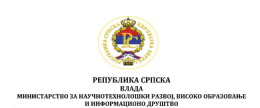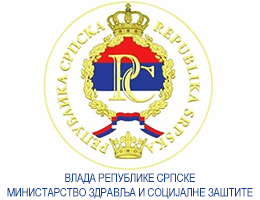Razlike u percepciji, znanjima i stavovima studenata fizičkog vaspitanja i sporta o korišćenju nedozvoljenih supstanci u sportu
Volume 5, Issue 1 (2015)
Volume 5, Issue 1 (2015)
Razlike u percepciji, znanjima i stavovima studenata fizičkog vaspitanja i sporta o korišćenju nedozvoljenih supstanci u sportu
Apstrakt:
Problem upotrebe zabranjenih supstanci (dopinga) u sportu je bio, jeste i biće aktuelan problem koji narušava sam duh sporta, ljepotu i zadovoljstvo, a vrlo često i zdravlje sportiste. Zbog toga je neophodno pristupiti rješavanju ovoga problema, ako je moguće i trajno, mada je to nekada jednostavno neizvodljivo. U istraživanju je učestvovalo ukupno 200 studenata Fakulteta fizičkog vaspitanja i sporta, od čega 100 studenata Univerziteta u Istočnom Sarajevu (Bosna i Hercegovina) i 100 studenata AMU Aligarh PU (Indija), starosne dobi od 18-26 godina. Od ukupnog uzorka 170 (85%) su bili ispitanici muškog pola, dok je 30 (15%) ženskog pola. Osnovni cilj istraživanja je bio da se provjeri nivo znanja i utvrde stavovi studenata i utvrde njihove međusobne razlike o upotrebi zabranjenih supstanci u sportu. Za prikupljanje neophodnih informacija korišćen je anonimni anketni upitnik sa 13 jasno definisanih pitanja, (11 pitanja zatvorenog i 2 pitanja otvorenog tipa) koja su se odnosila na određena znanja, stavove o dopingu u sportu. Dobijeni su relevantni rezultati koji su globalni pokazatelj informisanosti, znanja i stavova populacije studenata fizičkog vaspitanja i sporta o sve većem problemu današnjeg modernog sporta koga nazivamo doping. Od ukupnog uzorka, čak 85% studenata oba subuzorka su označili atletiku kao sport sa najviše doping afera, a zatim slijedi biciklizam (43%), bodi bilding i dizanje tegova (22%), dok su sportske igre sa (28%), Cricket (25%), Streljaštvo i Šah sa (19%), kao sportovi sa najmanjim brojem doping afera.
Ključne riječi:
farmakološka sredstva, zdravstveno stanje, posljedice, prevencija, edukacija
Puni tekst:
Reference:
- Baron, A.D., Martin, D.M., & Magd, S.A. (2007). Doping in sports and its spread to at-risk populations: an international review. World Psychiatry, 6 (2), 118–123.
- BBC (15.07.2012). London 2012: All medallists to be drugs tested at Olympics. BBC News Online. Retrieved 28.07.2012, from http/:www.bbc.co.uk/sport/0/olympics/1884957.
- Bondarev, D.V., Ajitskiy, K.Y., Galchinsky, V.A., Labskir, V.M., & Druz, V.A. (2008). Attitude towards doping of Sports students and students of Polytechnic Sciences. Journal of Pedagogic, Pchology and Medico-Biologic Problems of Physical Training and Sport, (5),18–24.
- Bondarev, D.V., Galchinsky, V.A., Labskir, V.M., Druz, V.A., & Ajitskiy, K.Y. (2009). Doping prevalence and knowledge among high school students. Proceedings of the International scientific conference Actual problems of developing Sport for All, (pp. 293–295). Ternopil.
- Bondarev, D.V., & Sirenko, R.R. (2010). Doping amongst students: Knowledge, Attitude, Behaviour. Proceedings of the 1-st scientific conference Physical Education and Sport Improving among Sevastopol Youth, (pp.10–25). Sevastopol: Sevastopol National Technical University and World Anti-Doping Agency.
- Dhar, R., Stout, C.W., Link, M.S., Homoud, M.K., Weinstock, J., & Estes, N.M . ( 2005). Cardiovascular toxsicites of performance-enhancing substances in sport. Mayo Clinic Proceedings, 80 (10), 1307–1315.
- Deligiannis, A., Björnstad, H., Carre, F., Heidbüchel, H., Kouidi, E., Panhuyzen-Goedkoop, N.M. (2006). ESC study group of sports cardiology position paper on adverse cardiovascular effects of doping in athletes. European Journal of Cardiovascular Prevention & Rehabilitation, 13(5), 687–694.
- Erhnborg, C., & Rosen, T. ( 2009). The psychology behind doping in sport. Growth Hormone & IGF Research, 19, 285–287.
- Grohmann, K. (07.11.2012a). Doping-IOC strips Uzbek wrestler of Olympic bronze. Reuters. Retrieved 04.08.2012, from http//:www.reuters.com/article/2012/117077us-doping-olympics-wrestler-idUSBRE8A...
- Grohmann, K. (24.07.2012b). Testers nab more than 100 athletes - WADA. Reuters. Retrieved 04.08.2012, from http//:www.reuters.com/London-olympics2012/articles72012/07/247testers-nab-more....
- Hartgens, F., & Kuipers, H. (2004). Effects of androgenic-anabolic steroids in athletes. Sports Medicine, 34(8), 513–554.
- Hasson, N., Salem, M., & Sayed, M. (2009). Doping and effect of anabolic androgenic steroids on the heart:histological, ultrastructural, and echocardiographic assessment in strength athletes. Human & Experimental Toxicology, 28(5), 273–283.
- Jovanović, D., & Radovanović, D. (2001). Doping i sport [Doping and sport. In Serbian]. Niš: Roller print.
- Kindlundh, A.M., Isacson, D.G., Berglund, L., Nyberg, F. (1998). Doping among high school students in Uppsala, Sweden: A presentation of the attitudes, distribution, side effects, and extent of use Scandinavian Journal of Public Health, 26(1), 71–74.16.
- Kanayama, G., Gruber, A.J., Pope, H.G., Jr., Borowiecki, J.J., & Hudson, J.I. (2001). Over-the-counter drug use in gymnasium: an unrecognized substance abuse problem? Psychoter Psychosom, 70 (3), 137–140.
- Khan, Z., Singh, S.P., 1, Ali, A.B, & Khan, N.A. (2014). Attitudes of Students of Sports Participants about Doping in Sports. International Journal of African and Asian Studies-An Open Access International Journal, Vol.5, 40-44.
- Kokkevi, A., Fotiou, A., Chileva, A., Nociar, A., & Miller, P. (2008). Dailiy exercise and anabolic steroids use in adolescents: a cross-national European study. Substance Use and Misuse, 43 (14), 2053–2065.
- Laure, P., Binsinger, C., & Lecerf, T. (2003). General practitioners and doping in sport: attitudes and experience. British Journal of Sports Medicine, 37, 335–338.
- Lucidi, F., Zelli, A., Mallia, L., Grano, C., Russo, M.P, & Violani, C. (2008). The social-cognitive mechanisms regulating adolescents' use of doping substances. Journal of Sports Sciences, 26 (5), 447–456.
- Mc Cabe, E.S., Brower, K,J., Brady, T., West, B.T., Toben, F., Nelson, T.T., Wechsler, H. (2007). Trends in non-medical use of anabolic steroids by U.S. college students: Results from four national surveys. Drug Alcohol Depend, 90 (2-3), 243–251.
- Melia, P., Pipe, A., Greenberg, L. (1996). The use of anabolic-androgenic steroids by Canadian students. Clinical Journal of Sport Medicine, 6(1), 9–14.
- Michalák, K., and Kyselovičová, O. (2001). Užívanie anabolík počas kondičného tréningu rekreačne športujúcich mužov [Taking anabolic steroids during conditioning training recreational athletes. In Slovak]. Telesna výchova a šport, 11 (2), 17–21. Bratislava.
- Mougios, V. (2001). Doping abuse in recreational sports. In C. Peters, T. Schulz., & H.Michina (Eds.), Biomedical side effects of doping (pp.183–191). Bonn: Bundesinstitut fur sportwissenschhaft.
- Pupiš, M, & Polgar,V. (2006). Znalosti športujúcej mládeže o dopingu a možnosti dopingovej prevencie [Knowledge sportmen zouth of doping and possible doping prevention. In Slovak] In: Proceedings of the International Scientific Seminar of Doctoral Candidates: a humanistic form of sport and physical education, (pp. 46). Bratislava: UK FTVŠ.
- Pupiš, M., & Korčok, P. (2004). Vytrvalostný šport a doping [Endurance sport and doping. In Slovak]. Slovenská chôdza, 8 (4), 36.
- Parssinen, M., & Sepapala,T. (2002). Steroid use and long-term health risk in former athletes. Sports Medicine, 32(2), 83–94.
- Payne, J.R., Kotwinski, P.J., & Montgomery, H.A. (2004).Cardiac effects of anabolic steroids. Heart, 90, 473–475.
- Pavlović, R. (2006). Atletika-antropološka obilježja. [Athletics-anthropological characteristics. In Serbian] Istočno Sarajevo:Fakultet fizičke kulture.
- Pavlović, R., & Pupiš, M. (2013). Student attitudes and knowledge of physical education and Sports on use doping in sport. Sport Science, 6 (2), 21–28.
- Pavlović, R., & Idrizović, K. (2013). Attitudes of students of physical education and sports about doping in sport. FACTA UNIVERSITATIS Series: Physical Education and Sport, 11(1), 103–113.
- Petroczi, A. (2007) Attitudes and doping: A structural equation analysis of the relationship between athletes' attitudes, sport orientation and doping behaviour Substance Abuse: Treatment, Prevention, and Policy, 2(1), art. no. 34
- Rachoń, D., Pokrywka, L., & Suchecka-Rachoń, K. (2006). Prevalence and risk factors of anabolic-androgenic steroids (AAS) abuse among adolescents and young adults in Poland. International Journal of Public Health, 51(6), 392–398.
- Živanović, N. (2000). Prilog epistemiologiji fizičke kulture. [Contribution epistemology of physical education. In Serbian] Panoptikum Niš
- Wanjek, J.B., Rosendahl, B., Strauss, H., & Gabriel, H (2007). Doping, Drugs and Drug Abuse among Adolescents in the State of Thuringia (Germany): Prevalence, Knowledge and Attitudes. International Journal of Sports Medicine, 28(4), 346–353.
- Wroble, R.R., Graay, M., & Rodrigo, J.A. (2002). Anabolic steroids and preadolescent athletes: prevalence, konwledge and attitudes. Sport Journal, 5(3), 1–8.
- Wilson, S. (13.08.2012). "Belarus shot putter stripped of Olympic gold".Associated Press. Retrieved11.10.2012,fromhttp://www.canada.com/sporta/all/Belarusian+shot+putter+Nadzeya+Ostapshu....
- Yesalis, C,E., Michael, S., & Bahrke, M.S. (2000). Doping among adolescent athletes. Best Practice & Research Clinical Endocrinology & Metabolism, 14(1), 25–35.






